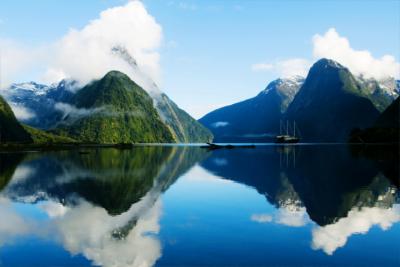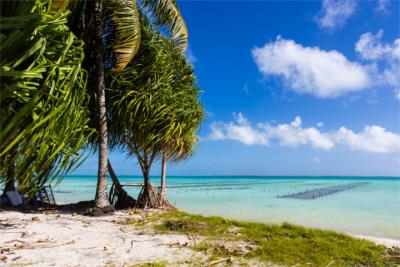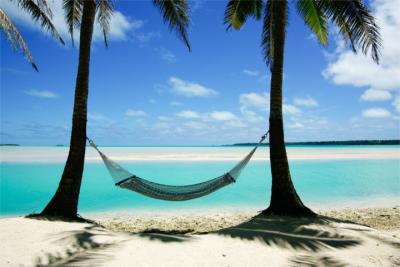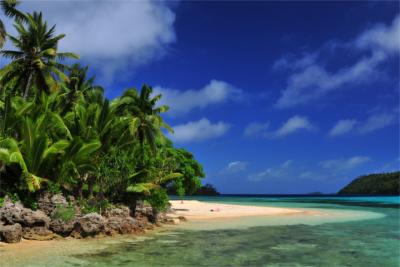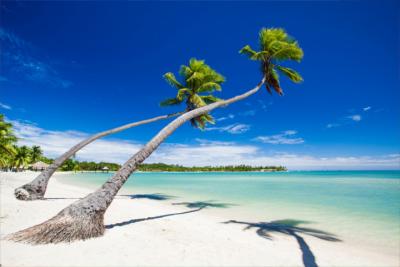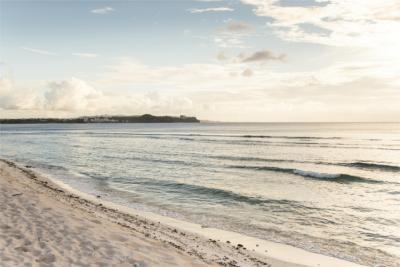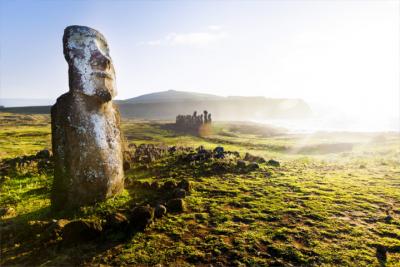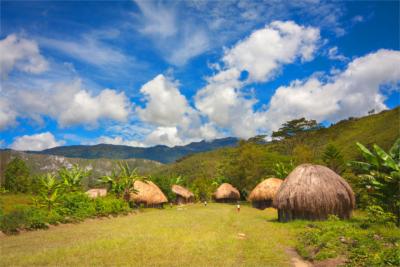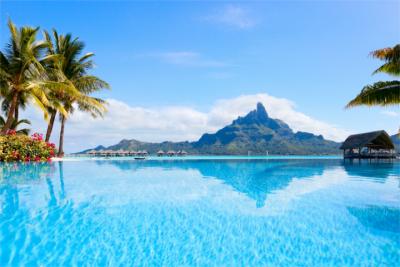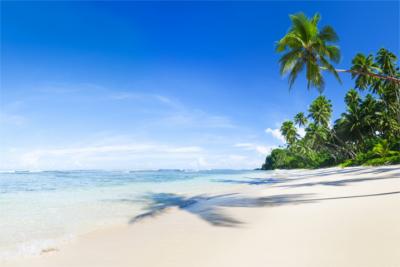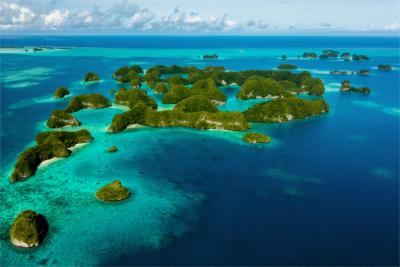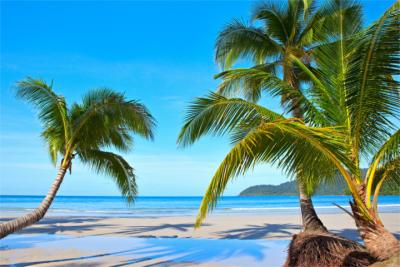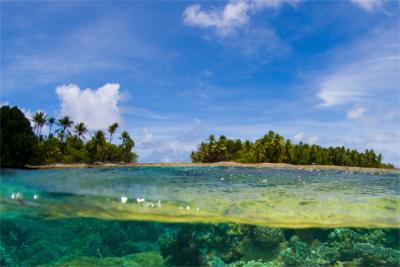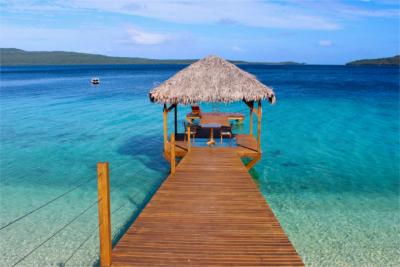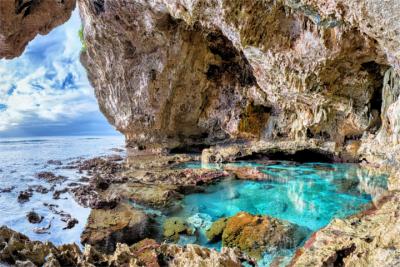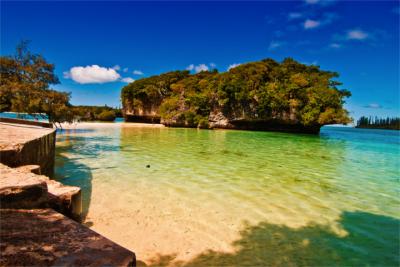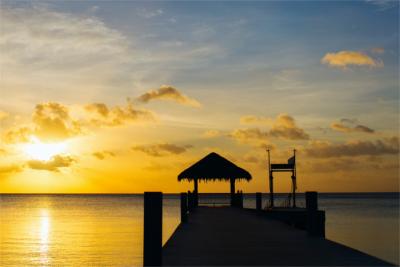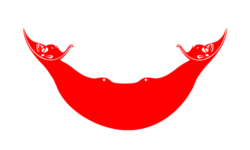Travel Offers
Travelmyne Featureprint
Distance
Easter Island - The Island Cult of the Moai in the Pacific
Silent stone giants watch the once lushly vegetated island with empty eyes. The secret of the moai sculptures has not been unlocked yet and allures both adventurers and lovers of ancient advanced civilisations to the small Easter Island in the middle of the vast Pacific Ocean.

Geography - The broad expanse of the Pacific Ocean
Easter Island, which has the shape of a triangle and is also called Rapa Nui, lies in the Pacific Ocean isolated from the mainland. Politically speaking, the small island (162 km²) has belonged to Chile since 1888 but there is a distance of over 3,800 kilometres between them. Even the nearest Oceanic island Tahiti is still over 4,200 kilometres away. Easter Island is only 24 kilometres long and 13 kilometres wide at its widest point. Its biggest and only town is Hanga Roa. It is where tourists find accommodation. The climate is subtropical and pleasantly warm all year. January and February are the warmest months with average daily temperatures of about 21 °C.

Nature - Dead volcanoes and a fresh grassy landscape
Easter Island is the tip of a volcano which emerged from the ocean. These giants, which were once active, have been dead for a long time and are covered in a juicy layer of green grassland now. The Maunga Terevaka is the highest peak on the island with a height of only 507 metres. There are over 700 former craters in the whole region to the present day but most of them have eroded and become part of the landscape's smooth hills. The island's coast is typically volcanic. Rugged rocks and cliffs of up to 300 metres of height characterise the landscape. You only find a few beach sections. The whole island must have been vegetated by palms at one point but there is nothing left of this lush flora. Easter Island is home to less than 30 indigenous types of plants and the fauna has become sparse as well. Only seven species of birds populate the barren island now.

Natural sights - Deserted sandy beach, coconut forests and a view of the crater
Despite its small size, Easter island has two national parks. Both the Hango Roa and the Rapa Nui National Park are located in the fertile north of the island. The small Anakena Bay contains a hidden paradise: the island's only white sandy beach. Tour groups have cosy picnics in the coconut grove right behind the beach. With a bit of luck, you can spot sperm whales, which live around the island. Travellers can climb the three great volcanoes Rano Kao, Poitke and Maunga Terevaka. Particularly impressive is the crater of the Rano Kao in the south-west. Visitors have a spectacular view of the island panorama from up there.

Culture - The fall of the moai
The hundreds of massive stone giants of the moai characterise the island's landscape and astonish people to the present day. Who built them? Which purpose did they have? And why were they overthrown in the end? The history of the island and its population is still not clear. It is believed that the Polynesian people were the first to settle on the remote island. It is now known with relative certainty that the island's indigenous vegetation changed from the 13th century on. The once green palm island turned into a barren grassy landscape. This development was probably caused by native tribes who exploited the island's nature to make room for settlements. They built boat-shaped paenga houses from California bulrush, erected magnificent stone walls and created the giant stone statues - the moai. Whether these figures embody tribe leaders, sacred ancestors or gods cannot be determined. The disappearance of the trees was accompanied by the death of the island's animal species. Migrating birds did not find nesting places any more and the island was afflicted by famine, war and decay. The invocation of the stony giants did not help improve this situation, so the tribes turned against their gods and literally overthrew them.

Cultural sights - The Navel of the World
The Dutchman Jakob Roggeveen was the first European to set foot on the island after he discovered it on Easter Sunday in 1722 and named it "Easter Island". He was as impressed by what he found on the island as is every visitor to the present day. The Rapa Nui National Park has been part of the UNESCO World Heritage since 1995. The region of the Rano Raraku is especially fascinating. Over 300 stony giants at all stages of their construction are located here in the "birthplace of the moai". About 890 statues were counted but there are said to have been over 1000 of them. Another mysterious highlight on the island is Ahu Te Pito Kura. This strange arrangement of several spherical stones is also referred to as the "Navel of the World". The island offers a number of cultural attractions besides the moai such as the Rapa Nui's writing system Rongorongo, the cult site Orongo with the legend of the birdman at the cliff of Rano Kao which bears the word "Makemake" and the Father Sebastian Englert Anthropological Museum.

Experience - Avenida Atamu Tekena
Easter Island's only town Hanga Roa is equipped with everything a tourist needs. There are shopping facilities in the form of small shops and souvenir shops, a bank, a post office and a pharmacy. Popular souvenirs are small moai artworks and knowing that you are among the little number of people who have ever been to this remote island. Tourists mainly spend their evenings in the town's main road, the Avenida Atamu Tekena. The bars and restaurants you find there also offer culinary delicacies but travellers should note that most products have to be imported from the mainland, which is reflected in their prices. The island's only disco is mostly reserved for young people.

Activities - Sunbathing at the seaside and a lot of relaxation
It only takes a few days to explore Easter Island as it is quite small. Although the inhabitants mainly live on tourism, there is not a great range of leisure activities. The most popular ones are hikes along the coast or to the volcanic craters (for advanced sportspeople), swimming in the Pacific Ocean or sunbathing in Anakena. Many sights can be reached by off-road vehicle, by bike or on the back of a horse. The tourist focus, however, is on the cultural sights.

Information
It is a good idea to visit Easter Island as part of a tour of Chile or Polynesia. You can fly to the island's airport Mataveri International from Santiago de Chile or Tahiti. Travellers can use the road network to get to the tourist attractions. As there may be cases of dengue fever on the island, visitors should equip themselves with mosquito repellent before they set on their journey.
Easter Island is the dream of many cultural romantics but the remote island is mostly reserved for cruise and individual tourists. People who want to meet the stony giants face-to-face should not miss out on this unique experience.

